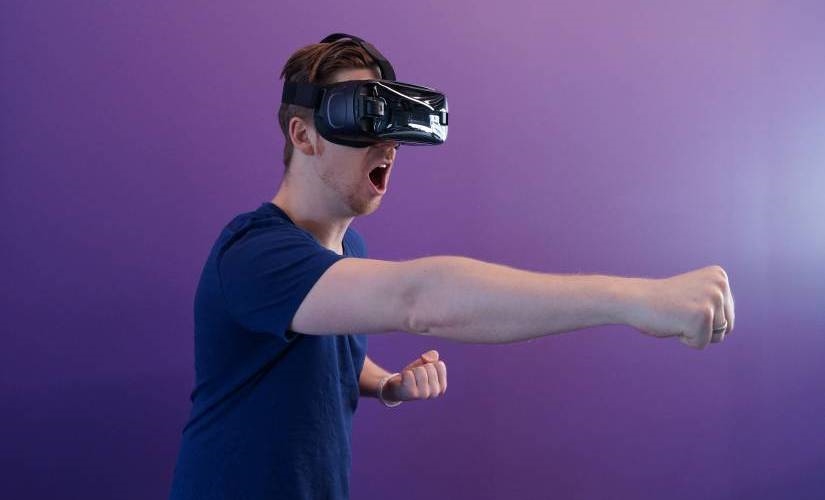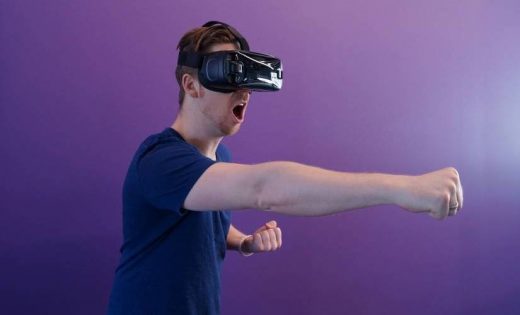Virtual Reality Can Save Lives and Isn’t Only for Fun
Virtual Reality Can Save Lives and Isn’t Only for Fun

Despite all the joys that technological progress brings us this progress still leaves many with a question: “So what if so many people still don’t live to mature age?” How can a new technical toy help a man suffering from cancer? However, everything is not so sad – even when it comes to such seemingly frivolous things as virtual reality glasses. Virtual reality can saves lives and isn’t only for fun.
VR is still primarily associated with games and movies.
Nevertheless, scientists are more and more interested in it — and not for leisure. In recent years, VR has proven its ability to solve important problems. For example, in medicine, including the most problematic places in this industry.
Areas of Medicine Where VR Can Be Useful
Cardiovascular diseases.
Diseases of the heart and blood vessels are the biggest cause of premature death. It’s not easy to deal with the heart, because it is a very complex organ. It’s incredibly hard to understand what’s going on inside. It requires both quick responses, balanced and accurate decisions. What does virtual reality have to offer here?
First of all, modeling. Ask any surgeon – and he will tell you how hard it is to imagine, and then also describe what the heart is in three dimensions. But it is also not static. At least, static – this is not what the surgeon would like to see during the operation when dealing with the heart. How to avoid a fatal error?
Avoiding a fatal error is where virtual reality glasses come to the rescue.
In the Stanford Virtual Heart program, for example, you can explore the human heart from the inside with a VR headset. The program was launched by the School of Medicine at Stanford University with the support of VR Oculus. It helps students identify heart defects and teaches them to understand what is happening with the patient.
But the VR headset and its benefits are not limited to careful observation. This system saves a lot of money and costs much less than the plastic models that were used before. It is planned to develop up to thirty models, allowing to explore problems of the heart with the help of virtual reality glasses.
Another area of effective application of virtual reality in medicine is post-stroke rehabilitation.
Often, people who have experienced a stroke are experiencing complications with restoring their motor activity. But VR helps these patients get on their feet faster by teaching them to control the digital avatars of their bodies. Visualization of movements helps to awaken nerve endings out of sleep.
Cancer
Although cancer does not rank first among the causes of death, the suffering that it carries with it causes people to have the most powerful emotional response. Physical pain is the main challenge that cancer throws to patients, their relatives, and doctors. Currently, opioids are used as a painkiller for cancer patients, but their anesthetic effect is unstable and gradually decreases over time.
The output help for cancer patients offers virtual reality, and is based on a distracting effect.
Immersion in the virtual world floods the brain with sensory information. It reduces its ability to process information about pain. It has been proven that VR reduces the concentration-time for pain by up to 48%, and opioids by only 10%. Virtual reality effectively combats anxiety and stress in cancer patients, especially in young people.
Companies KindVR, and Oncomfort, who see their mission in helping sufferers, have developed several programs using VR to reducing pain. Patients are able, among other things, to travel the underwater world or to visit Iceland.
Another possibility of virtual reality in the treatment of cancer is the exchange of experience in complex operations.
In 2016, a thirteen-thousandth medical intervention was broadcast on 360° video. British surgeon Shafi Ahmed used VR to share knowledge and practical skills with students and colleagues from around the world.
Respiratory diseases
Respiratory diseases are a serious global problem. It is estimated that more than 6 million people worldwide suffer from asthma, COPD, tuberculosis, and pulmonary hypertension. Diseases of the lower respiratory tract are the most common cause of mortality in children under the age of five. Very often, irreversible consequences result from improper use of inhalers and a lack of knowledge about how to behave during an attack.
Virtual applications help people with asthma cope with their symptoms starting from the age of five. They teach how to use an inhaler and how to breathe properly – sometimes it can save lives. The use of VR in the treatment of respiratory diseases is still in its initial stage, but certain steps in this direction have already been made.
There are attempts to introduce VR into the protocol of artificial ventilation of the lungs, which should reduce the risk of physiological and psychological complications during ventilation.
Diabetes
In this area, VR is primarily used for educational purposes, both for physicians and patients. For example, Diabetes Voyager uses Oculus VR and Microsoft Kinect to guide users through the heart, brain, and vascular system of a diabetic. The student has the opportunity to face the challenges that diabetes gives, including achieving a normal level of glycated hemoglobin, avoiding hypoglycemia, and fighting weight gain.
Alzheimer’s disease
Alzheimer’s disease is the dominant type of dementia. It affects millions of people around the world, and the number of people suffering from it is constantly growing. Unlikely that you can simply dismiss this problem by explaining it to simple aging; scientists have began a direct call to work on this problem.
The main test for people with Alzheimer’s and dementia is in isolation.
It manifests itself in various fields: speech, interaction with the environment, and memory. The use of VR in this area is based on the principle of neuroplasticity – the ability of the brain to re-form synapses when interacting with an enriched environment.
Scientists, along with programmers, develop programs that, on one hand, can revive the previous life experiences of older people. The VR stimulates positive emotions by using scenarios of traveling to exotic places, and observing wildlife. VR gives dementia sufferers a chance to feel alive and maintain a sense of self-worth.
Alleviating bordom in the lives of Alzheimer’s sufferers is not the only application for VR in the fight against this ailment.
Virtual reality technology makes possible to identify the risk of the disease at the age of eighteen based on data of the passage of the virtual labyrinth to the subjects. This helps scientists better understand how the disease develops and how it can be prevented.
Future Prospects
We have described just a few examples of how virtual reality is used in medicine. However, the potential for this technology is immense. Medical VR applications are becoming more and more diverse and can be developed for the needs of both private and state medical institutions.
In addition to training, simulation of operations, treatment of psychological disorders and distraction from pain, they can be used to diagnose and minimize labor costs during labor-intensive operations. There is a project dedicated to creating a VR application aimed at diagnosing specific and complex eye diseases.
The solution proposed by the developers reduce the number of personnel involved in the diagnosis and helps eye doctors obtain more accurate data on the nature of the disease.
The post Virtual Reality Can Save Lives and Isn’t Only for Fun appeared first on ReadWrite.
(33)


